exploration before the Age of Discovery
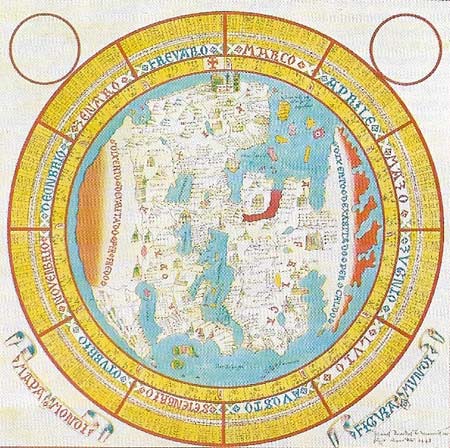
Figure 1. This Venetian map of 1448 shows how the typical medieval "wheel" map of the world was beginning to change. The medieval mappa mundi was biblically inspired, with Jerusalem at the center, the terrestrial paradise at the top and systematically disposed continents. By the mid-15th century the conventional medieval map was being influenced by contemporary marine charts and enriched by incorporating some of the information from travellers. It was also modified by the recovery of classical writing about the outside world, in particular the geography of Ptolemy and Fra Mauro, as evidence by this map.
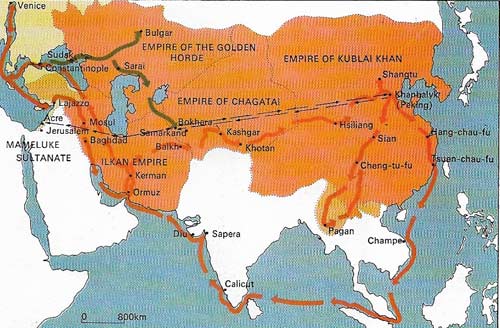
Figure 2. In 1260 the Polos, Nicolo, and Maffeo, travelled from the Crimea via Bokhara to Peking. Returning to Europe, they set out once again in 1271 with Marco Polo. His return journey, from 1292–1295, was along the Malay Peninsula, Sumatra and India. These journeys revealed how the Pax Mongolica had had helped to connect Europe with Asia and enabled Europeans to learn about the East.
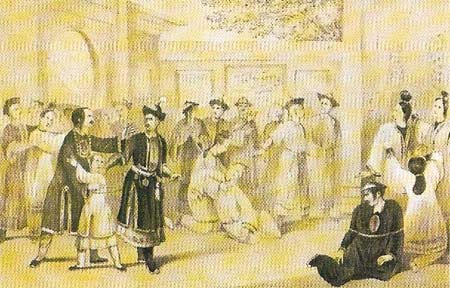
Figure 3. Genghis Khan the Tatar conqueror, rode roughshod over the Chinese civilization, selling many people into slavery. The Chinese resented the Khan; and they did not appreciate the links that their conqueror forged for them with the outside world. For China, the imposition of Mongol rule meant the breaking point on the continuity of its tradition. The Mongols were looked upon as foreign overlords, and were finally expelled by the native Ming dynasty in the 14th century.
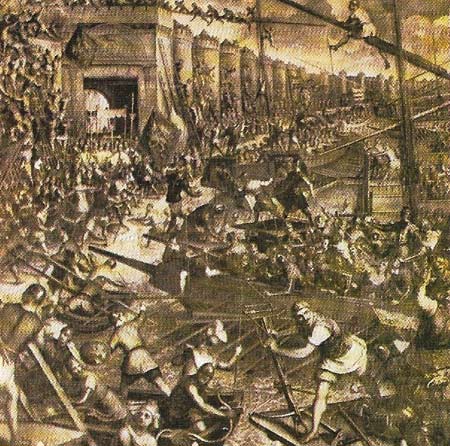
Figure 4. The siege of Constantinople in 1453 vividly illustrates how Europe in the 15th century was contracting, not expanding. The Ottomans had triumphed against the last Crusade from Europe. The capture of Constantinople (today known as Istanbul) meant that the Ottomans were in Europe to stay.
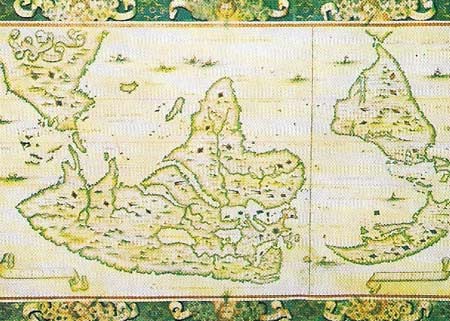
Figure 5. Nicolas Deslien's "upside-down" map of the world of 1567, based on lost Portuguese originals, shows how radically the European view of the world was changing as exploration continued. Whereas maps in the Ptolemaic tradition had often been drawn with east at the left and Jerusalem at the center. This has north at the bottom and, as nearly as possible, France at the center. Its accurate description of known parts of the world reflects the growing precision of navigational techniques. But when describing unknown parts – the landmass to the south of Java, for example – it is still seriously inaccurate.
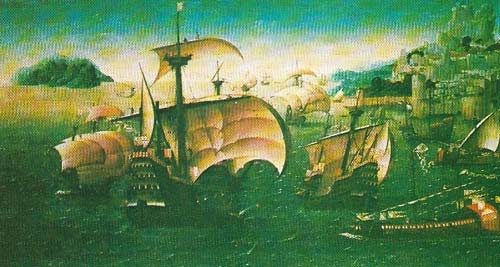
Figure 6. By the end of the 15th century, the vessels known as carracks were the largest merchant ships, at the other end of the scale from the small caravels. Portuguese carracks could be from 600–1,000 tons and were heavily built, with large castles, commonly three-masted with square rigging on fore and main and with lateen mizzens. The castle structures became more elaborate (as this 16th century picture shows) and they were more often incorporated into the hull. These were the ships whose size, capacity for goods and men and solid construction made them the characteristic vessel used by the Portuguese in their Eastern reconnaissance and trade, even though their bulk made them less well suited to carrying out the more detailed tasks of exploration.
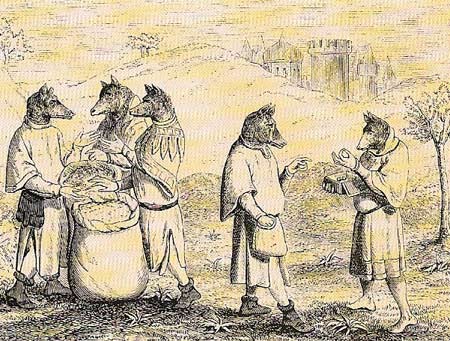
Figure 7. Until Marco Polo's return to Venice, Europe learned little new about Asia. In legend it was still a continent of monsters and demons. In the 12th century Christians debated whether the dog-headed men of India might be converted, and even as late as the 14th century Western manuscripts showed Indians with dog heads, fantasies which the discovery of direct sea routes to the East were at last effectively to dispel.
At the end of the fifteenth century Vasco da Gama (c. 1469–1525) sailed round the Cape of Good Hope to India and Christopher Columbus (1451–1506) stumbled upon the Americas. So began an age of discovery in which Europeans were to navigate the seven seas, make their landfall in most of the inhabited regions of the globe and come to think of the world as a whole. The voyages east, however, were simply new ways of going to places already, if imperfectly, known.
Alexander the Great had marched the Greeks through Persia into India; Rome had bought Asia's silks and peppers and had bequeathed Ptolemy's geography to medieval Europe; Byzantium had long been a bridge between Europe and Asia. But the hostile crescent of Islam had hemmed in Christian Europe, until the extensive con-quests of Genghis Khan (1167–1227) (Figure 3) gave it a brief respite from Islamic pressure.
The achievement of Marco Polo
The Mongol empires, stretching from Russia to China, straddled the land routes between Europe and Asia and allowed the two continents to trade directly with each other. In 1271 Marco Polo (1254–1324) travelled via Bokhara to Kublai Khan's court at Peking, and in the mid-14th century an Italian handbook for merchants, la Practica della Mercatura, described the 140-day journey from the Black Sea to China (Fig 2) and listed no fewer than 288 spices and drugs that could be bought in the markets of Asia. But these tenuous contacts of traders and also missionaries were once again snapped by the hordes of Tamerlane (1336–1405) and the dynasties that emerged out of the wreckage of the Tatar empires. That is why discovering a route to the East by sea was so important for European commerce and trade.
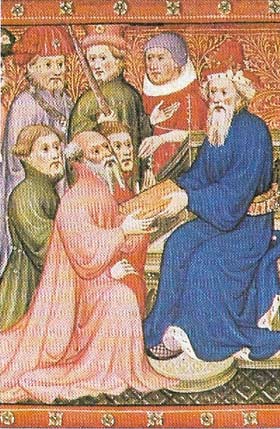 |
| Marco Polo travelled to Peking in 1275 and served the Mongols on the East for 17 years. Returning to Venice in 1295, Polo gave Europe its first detailed account of China and its neighbors in The Description of the World. It was the most comprehensive account of the East produced before 1550, full of hard details about cities, canals, rivers, ports and industries. A practical administrator and merchant, Polo had little eye for religion and civilization but his accounts are factual and relatively free from the fantasies that formed the staple of contemporary travel literature. He recreated Asia for the European mind. |
The importance of China
At the end of the long journey east lay China; where the native Ming dynasty (1368–1644) expelled the foreign Mongols, cultivated its own empire, restored its economy and refined its bureaucracy. Threatened by offshore rivals and by the scourge of Japanese piracy, the Ming withdrew into partial isolation, broke off relations with some of China's old tributaries, forbade its people to travel overseas, threw out foreign traders and prohibited private foreign trade. But the first Ming emperor had established relations with 17 different neighboring states, and in 1502 more than 150 self-styled rulers from central Asia traded with China under the cloak of tribute relations. The maritime expeditions of Cheng Ho hinted at a vast Chinese potential for seaborne expansion that was never to be realized.
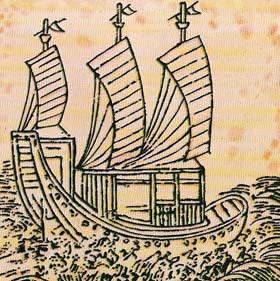 |
| Cheng Ho's seven maritime expeditions, beginning in 1405, and visiting over 30 countries, were remarkable feats of seamanship. The largest of his ships 121 meters (400 feet) long and 54 meters (180 feet) wide, with four decks and watertight compartments. The 62 ships of his voyage to India carried 28,000 men. |
By its self-denying ordinance Ming China did not fully exploit the valuable interport trade of the Indian Ocean, with its hub in the archipelago. This was left to the merchant principalities of the East Indies and to a motley crew of traders – Arabs, Persians and Indians. Ever since the time of the Cholas, India's mainland empires, expanding from their bases in Hindustan, were more concerned to defend their northern frontiers and to acquire territory in the south than to probe overseas. Babur, the first of the Moguls, began his conquest of India soon after Vasco da Gama reached Calicut. But the empire he founded remained land-based, and was never to possess a deep-sea fleet of its own.
Europe's deadliest enemies were also its closest neighbors – the Ottoman Turks. By capturing Constantinople in 1453 (Figure 4), the Ottomans held the gateway between Europe and Asia; by taking Mameluke Egypt (the Mamelukes were originally Turkish prisoners of Genghis Khan who seized control in 1250) and Syria (1516–1517), they severed the European trade route east and wrested much of the profits of the Eastern trade from the Venetians and Genoese.
The Ottomans move into Europe
Perhaps the most fateful decision in modern times was the Ottoman resolve to push westwards into Europe. This took the Ottoman armies through the plains of Hungary to the gates of Vienna and held their navy in the Mediterranean. By establishing their empire throughout the Balkans, the Black Sea region and the Levant, the Ottomans sealed off these areas from European expansion and gave the Iberian powers the incentive and the opportunity to find new outlets, whether by creeping round the African coast to the East or by making their landfall in America.
In Asia, Europe once again came into contact with great Oriental despotisms, mainland empires, many of which were Muslim, which it did not dare to challenge and which it could not hope to penetrate. In getting to the East by the new sea routes, Europeans merely touched upon the western and eastern edges of Africa, a continent whose northern territories had long been influenced by Islam but whose interior was long to remain unknown to the outside world.
In the New World the story was different. Here the Europeans actually discovered a continent that was out of touch with the rest of the world. There were remote, isolated, civilizations that had wondrous monuments and strange customs, but whose technology lagged far behind that of Europe or Asia. America's discovery by Europe opened her swiftly to the full blast of European influence: conquest and exploitation, disease and religion. Here the result was a clash of two wholly different cultures, which had come into contact with each other for the first time in recorded history.
